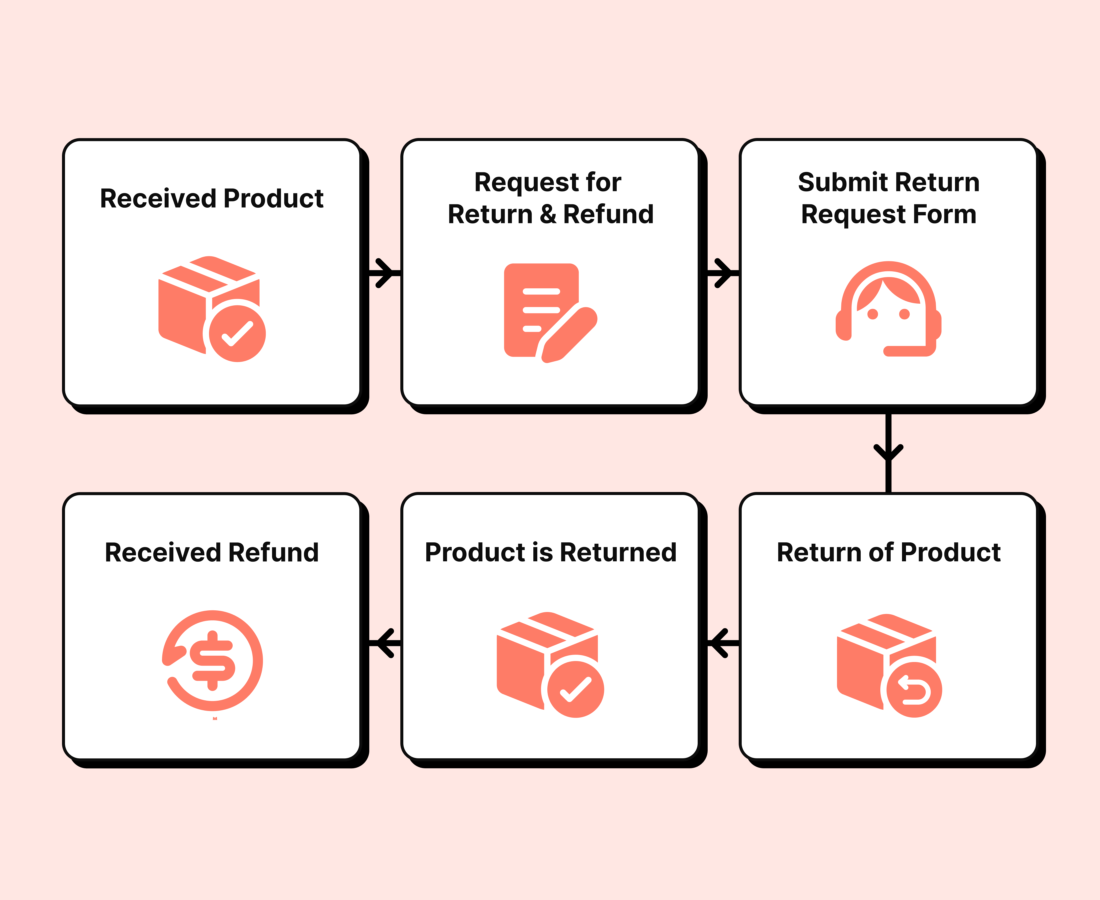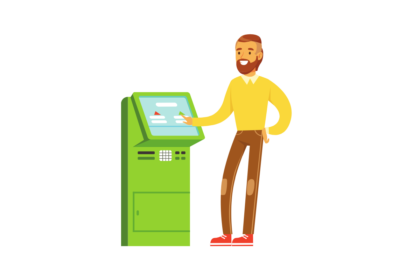Did you know that 30% of purchases made online are returned, compared to just 8.89% in brick-and-mortar stores? That’s a lot of buyers playing Goldilocks with their purchases—too big, too small, not quite right! For businesses, this isn’t just a logistical headache; it’s a bottom-line concern.
This is where Returns Merchandise Authorization (RMA) comes in—the secret sauce for streamlining returns and keeping customers happy without burning a hole in your profit margins.
In this article, we’ll explore how RMA isn’t just about managing returns—it’s about delivering an exceptional post-purchase experience. Because let’s face it: a seamless returns process can turn a grumpy returner into a loyal customer.
Ready to dive into the art and science of mastering returns? Let’s begin!
What is Return Merchandise Authorization (RMA)?
Return Merchandise Authorization (RMA), also known as Return Goods Authorization (RGA), is a systematic process that enables customers to return products to e-commerce platforms for a refund, replacement, or repair. This process is crucial as it ensures that returns are managed efficiently, maintaining customer satisfaction while protecting the business’s bottom line.
By implementing a structured RMA system, companies can streamline the returns process, reduce operational costs, and enhance inventory management. Moreover, a well-executed RMA process can provide valuable insights into product quality and customer preferences, informing future business strategies. In essence, RMA serves as a vital component in the post-purchase experience, fostering trust and loyalty among consumers.
How Does a Return Merchandise Authorization Work?
Understanding the Return Merchandise Authorization (RMA) process is essential for e-commerce platforms aiming to manage product returns efficiently. Here’s how it typically works:
- Customer Initiates Return: The customer initiates a return request through a designated portal, specifying the reason and preferred resolution—be it a refund, replacement, or repair.
- Authorization Issued: Upon reviewing the request, the e-commerce platform determines eligibility and issues an RMA number, along with instructions for returning the item.
- Item Returned: The customer ships the product back, using the provided instructions to ensure proper handling.
- Return Processed: Upon receipt, the e-commerce platform inspects the item to confirm its condition and processes the return accordingly—issuing a refund, offering an exchange, providing store credit, sending a replacement, or arranging a repair.
This structured approach ensures that returns are handled systematically, maintaining customer satisfaction while protecting the business’s interests.
Types of Return Merchandise Authorization
Keeping customers happy during the returns process often comes down to offering flexibility. Whether it’s a refund, exchange, or store credit, providing options ensures that customers feel valued, even when their purchase didn’t quite work out.
By tailoring the RMA process to suit different return scenarios, businesses can strike the perfect balance between customer satisfaction and protecting their bottom line. Here’s a look at the most common types of RMA and their benefits.
1. Refund
The classic solution: return the money to the customer’s original payment method. While it’s simple, e-commerce businesses may hesitate, especially for big-ticket items. Depending on the situation, refunds can be processed after receiving the returned item or even before, based on trust and fraud risk.
2. Exchange
Exchanges are a powerful tool for retaining revenue. By offering customers the option to replace an item with a different size, color, or even an entirely new product, e-commerce platforms can avoid lost sales. This approach not only enhances customer experience but also fosters long-term brand loyalty, making it a highly effective solution.
3. Warranty
Warranty returns are crucial for products with longer lifespans. E-commerce platforms handling warranty claims can streamline the process by offering clear return windows and repair or replacement options.
Proper management ensures customer trust and mitigates costs associated with faulty products, keeping both brand reputation and financial stability intact.
4. Third-party Warranty
For e-commerce businesses using third-party warranties, it’s essential to manage returns for products purchased through external retailers or marketplaces. Centralizing third-party warranty claims enhances data collection, making it easier to track customer issues and continuously optimize the returns process. This helps improve operational efficiency and strengthens customer satisfaction.
5. Store Credit
Store credit is an effective strategy for maintaining revenue while offering flexibility. By providing customers with store credit instead of a refund, e-commerce platforms ensure that the funds stay within the business.
This solution can also encourage repeat purchases, making it an important tool for retaining customers and reducing the financial impact of returns.
6. No-shipping
No-shipping returns are ideal for industries where restocking is not feasible, such as beauty or consumables. This process allows customers to submit proof of return, such as a photo, to instantly receive a refund or exchange. For e-commerce platforms, it simplifies logistics and reduces operational costs, all while maintaining customer satisfaction.
7. Return Reject
Rejecting returns is sometimes necessary—whether due to expired return windows or damaged products that cannot be repaired. E-commerce platforms must have clear, well-communicated return policies in place to manage these situations. Proper rejection handling reduces customer dissatisfaction and minimizes potential losses, ensuring that the business stays protected.
RMA Examples
RMA processes may seem like a behind-the-scenes operation, but they’re everywhere—saving the day when things go wrong. Let’s look at some real-world examples that show how businesses across industries use RMA to turn return headaches into hassle-free solutions.
- Apparel E-commerce Platform: Streamlined Exchanges: A clothing brand issues an RMA for a customer to return a mismatched size. The RMA process streamlines inventory updates and ensures a replacement is sent promptly.
- Electronics Online Store: Warranty Management: A customer returns a faulty laptop under warranty. The RMA number allows the manufacturer to track and repair or replace the product.
RMA Best Practices
A smooth RMA process isn’t just about getting products back; it’s about turning potential frustrations into opportunities for driving customer loyalty. By following best practices, you can simplify returns, keep customers happy, and avoid turning your warehouse into a return graveyard. Here are some tips to help you master the art of returns while keeping your sanity—and your bottom line—intact.
Simplify the Return Process for Customers
Streamline the return process by providing clear instructions and user-friendly RMA return forms. Allow customers to initiate returns through your website or mobile app, enhancing convenience and improving the overall customer experience.
Provide Correct Product Information
Offer accurate and detailed product descriptions, including high-quality images and information on materials used sizing, and dimensions. This transparency aids customers in making informed purchasing decisions, reducing the likelihood of returns due to unmet customer expectations.
Encourage Customer Reviews
7 out of 10 customers say they frequently read customer reviews which influence their purchase decisions. Incentivize customers to drop reviews by offering discounts or other benefits. Positive reviews assist future buyers in making informed choices, while constructive feedback can help identify areas for product or service improvement.
Optimize Product Packaging
20% of customers return an item because they receive it damaged. Invest in quality packaging materials to prevent product damage during transit. Proper packaging reduces the risk of returns due to shipping-related issues and enhances the overall customer experience.
RMA Common Challenges
Managing RMA isn’t always smooth sailing. By understanding the common pitfalls of RMA, you’ll be better equipped to tackle them head-on and keep your returns process running smoothly. Let’s break down the key challenges businesses face.
- RMA Has a Complicated Process: The RMA process often involves multiple steps, including verification, approval, and shipping. This complexity can result in delays and errors, jeopardizing customer engagement.
- RMA Process Can Be Slow: Delays in processing returns can result from lengthy verification periods and slow shipping. Such inefficiencies can negatively impact customer satisfaction and loyalty.
- RMA is Costly: Managing returns incurs significant costs, including shipping, restocking, and potential product repairs. These expenses can reduce profit margins if not effectively controlled.
- RMA is Susceptible to Fraud: The RMA process can be exploited by fraudulent claims, such as customers returning used or damaged items as new. This vulnerability can lead to financial losses and inventory discrepancies.
Strategies to Overcome the Challenges
Now that we’ve navigated the many challenges of RMA, it’s time to roll up our sleeves and tackle them head-on. With the right strategies in place, businesses can turn these hurdles into opportunities, creating a smoother, more efficient returns process.
Let’s dive into practical ways to overcome the common RMA roadblocks and keep things running like clockwork.
Streamline Return Process
Clearly define your return policies, covering scenarios like defective items or products damaged during shipping. Ensure this information is easily accessible on your e-commerce platform, setting proper customer expectations and reducing potential disputes.
Share Regular Updates with Customers
Keep customers informed throughout the return process by providing timely updates. This transparency reduces uncertainty, decreases customer inquiries, and enhances the overall customer experience.
Integrate a Returns Management Solution
A returns management solution automates the process of handling product returns. By integrating it, e-commerce platforms can manage returns seamlessly, reduce manual operations, and provide a better customer experience.
LateShipment.com’s Returns Experience Management software is a leading return management tool that helps you simplify and automate the returns process. This platform offers a comprehensive bouquet of features tailored to enhance the returns experience:
- Self-Serve Returns and Exchanges: Empower customers to initiate returns and exchanges independently through a branded portal, reducing customer support team involvement.
- Branded Return Tracking and Notifications: Provide customers with branded tracking pages and real-time notifications, enhancing transparency and trust.
- Smart Revenue Retention: Implement automated policies to encourage exchanges and store credits, helping retain revenue that might otherwise be lost through refunds.
- Automated Return Policies and Workflows: Define and enforce return policies automatically, ensuring consistency and compliance with company standards.
- Returns Management Portal: Access a centralized dashboard to monitor and manage all return activities efficiently.
- Returns Insight: Gain insights into return patterns and customer behavior to inform business decisions and improve product offerings.
By leveraging LateShipment.com’s returns experience management software, e-commerce platforms can transform their returns process into a competitive advantage, enhancing customer satisfaction and operational efficiency.
Conclusion
From ensuring a smooth returns process to driving customer engagement, RMA isn’t just a business tool—it’s a trust-building superpower. Sure, there are challenges: logistical hurdles, operational costs, and that one customer who returns everything. However, with the right strategies and a robust RMA solution, even these obstacles can be managed.
Speaking of robust solutions, LateShipment.com’s Returns Experience Management software is here to save the day. With detailed visibility, proactive customer engagement, and customizable return policies, it transforms your returns process into a seamless, customer-first experience. Whether you want to retain loyal shoppers or reduce return-related costs, LateShipment.com ensures you’re always a step ahead.
Experience how LateShipment.com can help streamline your return good authorization.
Book a demo today!











